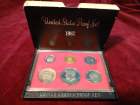Numismatics is the practice of studying and collecting coins. Unlike Jack Sparrow and his pirate friends, thanks to our current auction, you have the opportunity to collect some real treasures. Best of all, these coins can be appreciated in the comfort of your own home
.
It is important to speak the language of Numismatics. Here are some terms to get you started.
- Circulation: Coins struck for general use are in circulation.
- Coin rim: The rim of the coin is the outer edge, which is often raised.
- Device: The device is the design. It often features the bust of a person or an animal.
- Dies: The metal pieces that imprint the design on the coin are known as dies.
- Legends: The phrases on the surface of a coin are known as legends or mottoes.
- Luster: A bright, dazzling luster is more appealing than a dull coin. However, collectors generally avoid coins that have been cleaned or otherwise doctored.
- Mint: Coins are struck at a mint.
- Mintage: The number of coins that are struck is the mintage.
- Obverse: The side of a coin referred to as "heads" is known as the obverse side.
- Proofs: Proofs are coins that have been struck with a highly polished die and are sold especially to collectors. Cameo proofs are proofs with a frosted appearance. Proof coins are graded Proof 70, Proof 65, Proof 60, and below. Proof is sometimes abbreviated PR or PF.
- Reverse: The side of a coin referred to as "tails" is known as the reverse side.
- Strike: Well-struck coins have a distinct impression in the metal.
- Third side: The edge of the coin is sometimes called the third side.
- Uncirculated: A coin that is released to the public but not intended for general circulation. The U.S. Mint uses a special process to make uncirculated coins.
- Visual appeal: Some coins have a soft, satin luster, while others have a more reflective surface. Some coins are colorful.
- Wear: Deterioration, such as contact marks and hairlines, can decrease the value of a coin. Wear usually first occurs on the highest points of the coin.
United States coins that are popular choices with collectors include;
Coins that have been issued in a particular year. items 44-49
Collectors should determine what appeals to them before they buy a coin. Rare coins have a higher demand than common coins, and they can even be more expensive than older, more historic coins.
The condition of a coin can make a difference in price. Coins that are circulated and used as currency naturally become worn, and uncirculated coins often demand a much higher value than circulated ones. U.S coins are often graded based on a modified version of the Sheldon 70-point grading system, created by Dr. William Sheldon in 1949. We will talk more about these factors in another blog.
Coin collecting, aka numismatics, has it’s own language and many factors to consider. I hope this short introduction has proved informative. Collecting these tiny pieces of history is a fun and popular pastime, even without a pirate ship. Best of luck to you in this real life treasure hunt.
Happy Bidding,
Liz
No comments:
Post a Comment